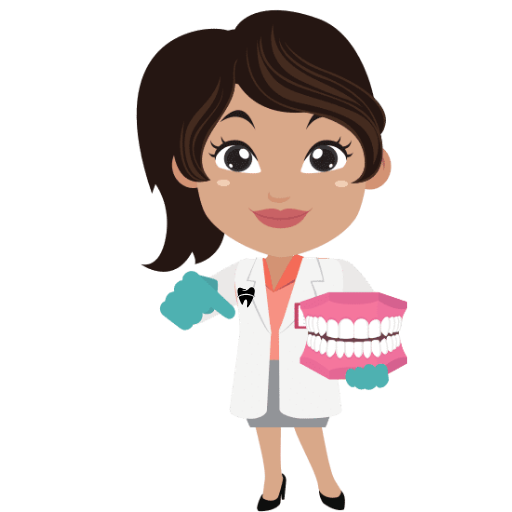Do you often wake up with a sore jaw or experience clicking sounds when you chew? It could be more than just bruxism – let’s dive into the world of temporomandibular disorders (TMD) to unravel the complexities of jaw troubles.
1. What is Bruxism? Understanding the Basics of Teeth Grinding
Bruxism is a common oral health condition characterized by the grinding, clenching, or gnashing of teeth. It typically happens during sleep but can also occur during waking hours. This subconscious habit can exert significant pressure on the teeth and jaw, leading to a range of dental concerns.
Understanding the basics of teeth grinding is essential for anyone experiencing this condition. Here are a few key points to help shed light on the subject:
- Symptoms: Bruxism can manifest in various ways, such as tooth sensitivity, headaches, jaw pain, and worn-down teeth. However, since it often occurs during sleep, many people may not even be aware they have this condition.
- Causes: Teeth grinding can be caused by a combination of factors, including stress, anxiety, an abnormal bite, or sleep disorders. Identifying the underlying cause is crucial in developing an appropriate treatment plan.
- Effects: Bruxism can have detrimental effects on oral health, leading to worn tooth enamel, chipped or fractured teeth, and jaw disorders like temporomandibular joint (TMJ) disorder. Seeking treatment early can help prevent further damage.
By familiarizing yourself with the basics of bruxism, you can better understand its impact on your dental health. If you suspect you may have teeth grinding, it is important to consult with a dental professional who can provide a proper diagnosis and recommend suitable treatment options.
2. The Link Between Bruxism and Temporomandibular Disorders (TMD)
Understanding the connection between bruxism and temporomandibular disorders (TMD) is crucial for those experiencing jaw pain and related symptoms. Bruxism, commonly known as teeth grinding or clenching, can contribute to the development or worsening of TMD. Here are some key points to consider:
1. Causes of TMD: While there are various factors that can contribute to TMD, bruxism is often a significant underlying cause. The repeated pressure and tension on the temporomandibular joint (TMJ) during grinding or clenching can lead to inflammation and damage, resulting in TMD symptoms.
2. Mutual Impact: Bruxism and TMD often go hand in hand, with each condition exacerbating the other. Persistent teeth grinding places excessive strain on the TMJ, causing TMD symptoms to worsen. Conversely, individuals with TMD may develop bruxism as their jaw tries to find a more comfortable position, leading to a cycle of pain and dysfunction.
3. Managing both conditions: Successful management of bruxism and TMD involves addressing the underlying causes and alleviating symptoms. Some approaches include:
- Using dental devices like night guards to protect teeth from grinding during sleep.
- Stress management techniques to reduce teeth clenching habits.
- Physical therapy exercises to strengthen jaw muscles and improve alignment.
- Medications or muscle relaxants prescribed by healthcare professionals.
By recognizing the link between bruxism and TMD, individuals can seek appropriate treatment to alleviate pain, restore jaw function, and improve overall quality of life.
3. Recognizing the Symptoms: Common Signs of TMD
Temporomandibular joint disorder (TMD) can cause significant discomfort and pain in the jaw, face, and neck. It’s important to be able to recognize the symptoms of TMD to seek appropriate treatment. Here are some common signs that may indicate the presence of TMD:
- Facial pain or tenderness: Individuals with TMD often experience pain or tenderness in and around the jaw, temples, and cheeks. This discomfort may be constant or intermittent.
- Clicking or popping sounds: A clicking or popping noise when opening or closing the jaw can be a sign of TMD. This may be accompanied by a sensation of the jaw getting stuck or locking in place momentarily.
- Difficulty chewing or limited jaw movement: TMD can cause difficulty in fully opening or closing the mouth, leading to problems with chewing and biting. Some individuals may also experience a feeling of stiffness or muscle fatigue in the jaw area.
If you are experiencing any of these symptoms, it’s essential to reach out to a dental professional who specializes in TMD. They can provide a proper diagnosis and recommend appropriate treatment options to alleviate your discomfort and improve your quality of life.
4. Causes and Risk Factors: What Triggers Temporomandibular Disorders?
Temporomandibular disorders (TMD) can be caused by various factors, which can contribute to the development of this condition. Here are some common causes and risk factors that can trigger TMD:
- Stress: Emotional or psychological stress can often lead to clenching or grinding of the teeth, putting strain on the temporomandibular joint (TMJ).
- Jaw injury: A direct blow or injury to the jaw joint, such as from a car accident or sports-related trauma, can damage the TMJ and lead to TMD.
- Bruxism: Habitual teeth grinding or clenching, especially during sleep, can place excessive pressure on the TMJ and surrounding muscles, causing TMD.
- Arthritis: Certain types of arthritis, such as osteoarthritis or rheumatoid arthritis, can affect the joints, including the TMJ, and contribute to the development of TMD.
- Malocclusion: Misalignment of the teeth, known as malocclusion, can put strain on the TMJ, leading to TMD.
While these factors can increase the risk of developing TMD, it’s important to note that not everyone with these risk factors will develop the disorder. Additionally, there may be other contributing factors involved in individual cases. If you’re experiencing symptoms of TMD, it’s best to consult with a healthcare professional who can provide a proper diagnosis and recommend appropriate treatment options.
5. Seeking Relief: Effective Treatment Options for TMD
There are several effective treatment options available to seek relief from temporomandibular joint disorder (TMD). Here are some approaches that can help alleviate the symptoms:
- Self-care techniques: Certain self-care practices can provide relief from mild TMD symptoms. These include applying heat or cold packs to the affected area, performing gentle jaw exercises, avoiding hard foods and gum chewing, practicing relaxation techniques to reduce stress, and maintaining good posture.
- Medications: Over-the-counter pain relievers like ibuprofen can help reduce TMD-related pain and inflammation. In some cases, your dentist or doctor may prescribe muscle relaxants or corticosteroids to ease muscle tension and inflammation.
- Oral appliances: Custom-fit oral splints or mouthguards can be used to alleviate jaw pain and discomfort caused by bruxism (teeth grinding) or jaw clenching. These appliances help stabilize the jaw, promote muscle relaxation, and prevent further damage to the joint.
- Physical therapy: Physical therapy techniques such as ultrasound, moist heat, and exercises can help improve jaw mobility, reduce muscle tension, and relieve pain. A qualified physical therapist can guide you through these exercises and treatments.
- Botox injections: Botulinum toxin injections can be used to temporarily paralyze the muscles causing TMD symptoms. This treatment can provide relief from severe jaw pain and involuntary muscle spasms, but its effects are temporary and may require repeated injections.
- Surgical options: In some cases, when other treatments have been ineffective, surgical intervention may be considered as a last resort. Procedures like arthrocentesis, arthroscopy, or open-joint surgery may be performed to repair or replace the damaged joint, alleviate pain, and improve jaw function.
Remember, it’s important to consult with a healthcare professional or dentist to determine the most appropriate treatment plan based on the severity of your TMD symptoms and individual needs.
6. Lifestyle Changes to Manage TMD: Tips for Reducing Jaw Discomfort
When it comes to managing TMD and reducing jaw discomfort, making certain lifestyle changes can be highly effective. Here are a few tips that can help alleviate your symptoms:
- Avoid hard or chewy foods: Opt for softer food options to reduce the strain on your jaw while chewing, such as mashed potatoes, yogurt, or soup.
- Practice relaxation techniques: Stress and tension can exacerbate TMD symptoms. Engage in activities like deep breathing exercises, meditation, or yoga to promote relaxation and relieve jaw tension.
- Avoid excessive jaw movements: Be mindful of actions that may strain your jaw, such as excessive gum chewing, biting your nails, or clenching your jaw. Minimizing these habits can help alleviate discomfort.
- Apply heat or cold therapy: Applying a warm compress or ice pack to the affected area can provide temporary relief from jaw pain and reduce swelling. Remember to wrap the compress in a towel to protect your skin.
- Ensure good posture: Maintaining proper posture throughout the day can help alleviate jaw discomfort. Avoid slouching and make a conscious effort to keep your head aligned with your spine.
By implementing these lifestyle changes, you can actively manage TMD and reduce jaw discomfort. Remember to consult your healthcare provider for a comprehensive treatment plan tailored to your specific needs.
7. How Stress and Anxiety Impact Temporomandibular Disorders
Stress and anxiety play a significant role in the development and worsening of temporomandibular disorders (TMD). Here’s how these psychological factors impact TMD:
1. Increased muscle tension: Stress and anxiety can lead to involuntary clenching or grinding of the teeth, also known as bruxism. Bruxism places excessive strain on the jaw muscles, causing pain and stiffness in the temporomandibular joint (TMJ).
2. Altered pain perception: Psychological stress can affect pain perception, making individuals more sensitive to TMD symptoms. Even mild stressors can exacerbate pain in the jaw, facial muscles, or even the ears, leading to heightened discomfort.
3. Poor coping mechanisms: When under stress or anxiety, individuals may resort to unhealthy habits such as nail-biting, biting on pens, or chewing gum. These habits can strain the TMJ and aggravate TMD symptoms over time.
4. Reduced self-care: Stressful situations can cause people to neglect their self-care routines, including oral hygiene and proper diet. Poor oral health can contribute to TMD symptoms, while an unhealthy diet may lead to inflammation in the jaw joint.
Addressing and managing stress and anxiety are crucial for individuals with TMD. By adopting stress management techniques, seeking therapy, and practicing relaxation exercises, it’s possible to improve TMD symptoms and prevent further complications.
8. The Role of Dental Intervention in TMD Management
When it comes to managing Temporomandibular Disorder (TMD), dental intervention plays a crucial role in alleviating symptoms and promoting overall oral health. With a deep understanding of the temporomandibular joint (TMJ) and its related structures, dental professionals can provide targeted and effective treatments for TMD patients.
Here are some key ways in which dental intervention can contribute to managing TMD:
- Diagnostic Evaluation: Dentists can conduct a comprehensive assessment to determine the underlying causes of TMD, such as occlusal abnormalities, malocclusion, or bruxism. This evaluation often includes dental history review, clinical examination, and radiographic imaging.
- Orthodontic Treatment: In cases where misalignment of the teeth or jaw is contributing to TMD symptoms, orthodontic intervention may be recommended. This can involve the use of braces, aligners, or other appliances to correct the bite and improve jaw alignment.
- Occlusal Splints and Mouthguards: Custom-made occlusal splints or mouthguards can help relieve muscle tension and reduce the impact of teeth grinding or clenching, which are common triggers for TMD symptoms. These oral devices are designed to provide cushioning and support for the TMJ during sleep or times of high stress.
Dental intervention in TMD management focuses on identifying the root causes of the disorder and providing individualized treatment plans to address each patient’s unique needs. By collaborating with dental professionals who specialize in TMD, patients can expect improved jaw function, reduced pain, and enhanced quality of life.
9. Overcoming Bruxism: Strategies to Break the Teeth Grinding Habit
Bruxism, also known as teeth grinding, is a common condition that can cause dental problems and discomfort. Thankfully, there are several strategies you can employ to break this habit and overcome bruxism:
1. Identify triggers: Pay attention to when and why you grind your teeth. Stress, anxiety, and certain medications can contribute to bruxism. By identifying triggers, you can take steps to reduce or eliminate them from your daily life.
2. Practice stress management: As stress is a significant contributor to bruxism, finding healthy ways to manage it can greatly help. Engage in activities that relax you such as yoga, meditation, or deep breathing exercises. Additionally, consider seeing a therapist or counselor to effectively deal with underlying stressors.
3. Improve sleep habits: Bruxism is often associated with sleep disorders, so ensuring you get a good night’s sleep is essential. Establish a regular sleep routine, create a calming sleep environment, and avoid stimulating activities or substances before bed, such as caffeine or electronic devices.
4. Wear a mouthguard at night: A custom-fit mouthguard can protect your teeth from grinding while you sleep. These devices act as a barrier, preventing damage to the teeth and reducing the intensity of grinding. Consult with your dentist to get a mouthguard that suits your specific needs.
10. Seeking Professional Help: When to Consult a Specialist for TMD
If you are experiencing discomfort or pain related to temporomandibular joint disorder (TMD), it may be beneficial to consult a specialist who can provide expert care and guidance. While some cases of TMD can be managed with simple home remedies and lifestyle changes, others require the expertise of a professional. Here are some factors to consider when deciding whether to seek professional help for your TMD:
- Severity of symptoms: If your TMD symptoms are significantly impacting your quality of life and daily activities, such as difficulty chewing or constant pain, it is advisable to consult a specialist. They can assess the severity of your condition and create a personalized treatment plan.
- Duration of symptoms: If you have been experiencing TMD symptoms for an extended period, seeking professional help is recommended. Chronic symptoms may indicate an underlying issue that requires specialized treatment.
- Failed self-care attempts: If you have already tried home remedies and over-the-counter options with little or no relief, it is time to consult a specialist. They can provide a comprehensive evaluation and explore advanced treatment options tailored to your specific needs.
- Impact on daily life: If your TMD symptoms are affecting your ability to perform everyday activities, such as speaking or sleeping, it is crucial to seek professional help. A specialist can help alleviate your discomfort and improve your overall quality of life.
Remember, each TMD case is unique, and seeking professional help can lead to a more accurate diagnosis and effective treatment plan. Don’t hesitate to reach out to a specialist who can address your concerns and provide the necessary guidance for managing TMD.
In conclusion, understanding TMD and its connection to bruxism is crucial for managing jaw troubles. Seeking professional help, practicing stress reduction techniques, and using a nightguard can alleviate symptoms and improve overall oral health. Remember, early intervention is key. Take care of your jaw today for a happier, healthier tomorrow.



